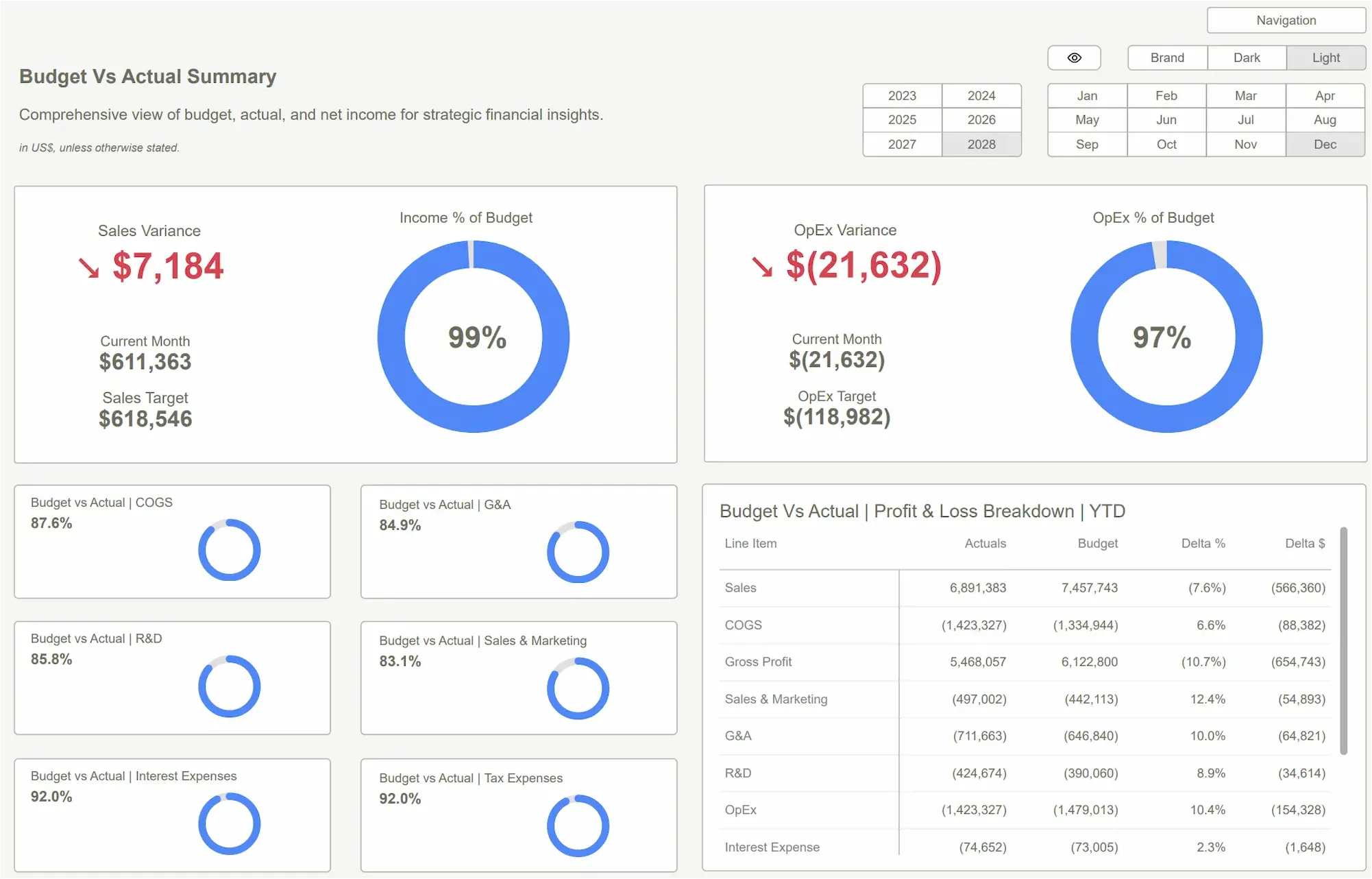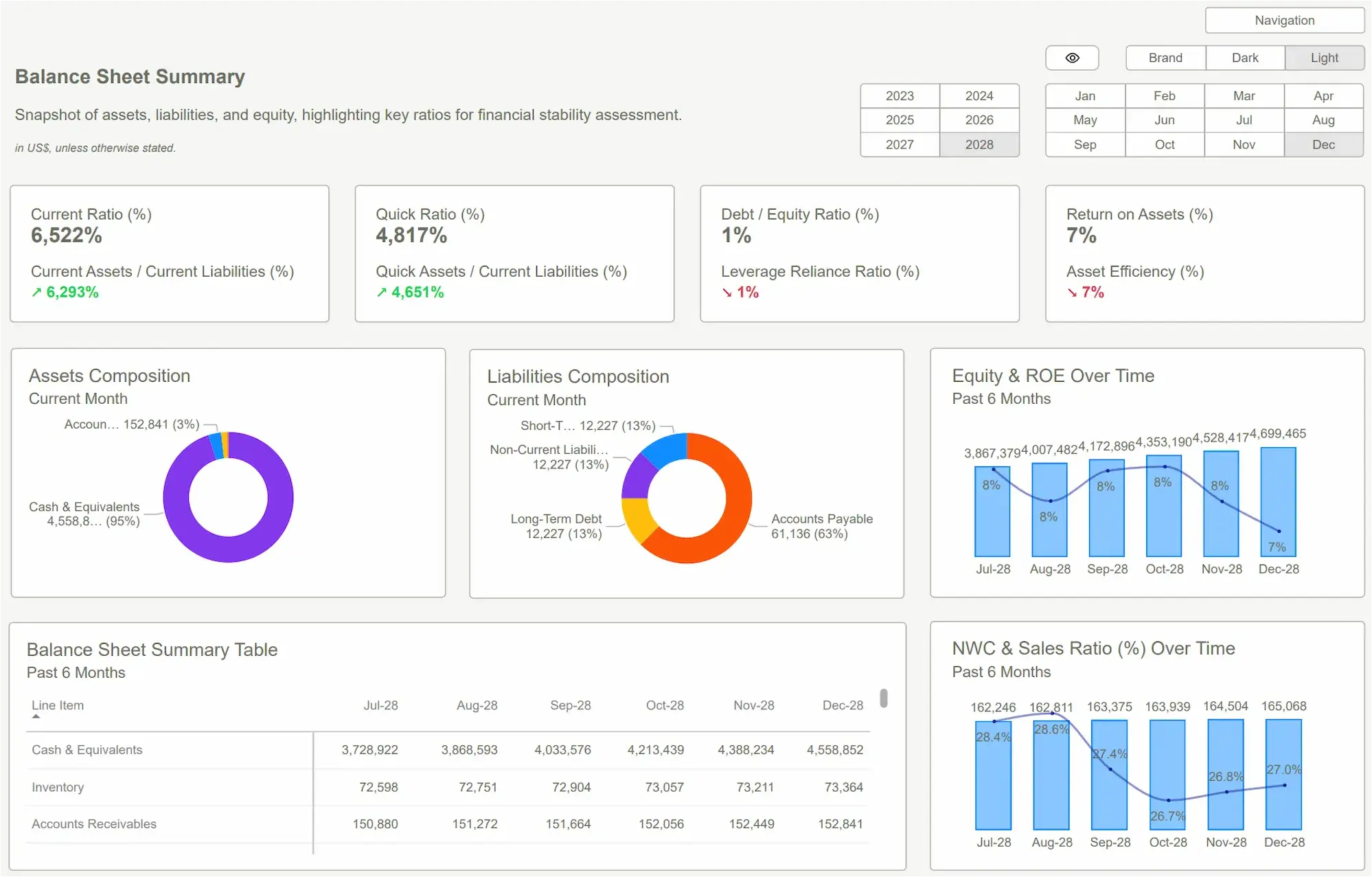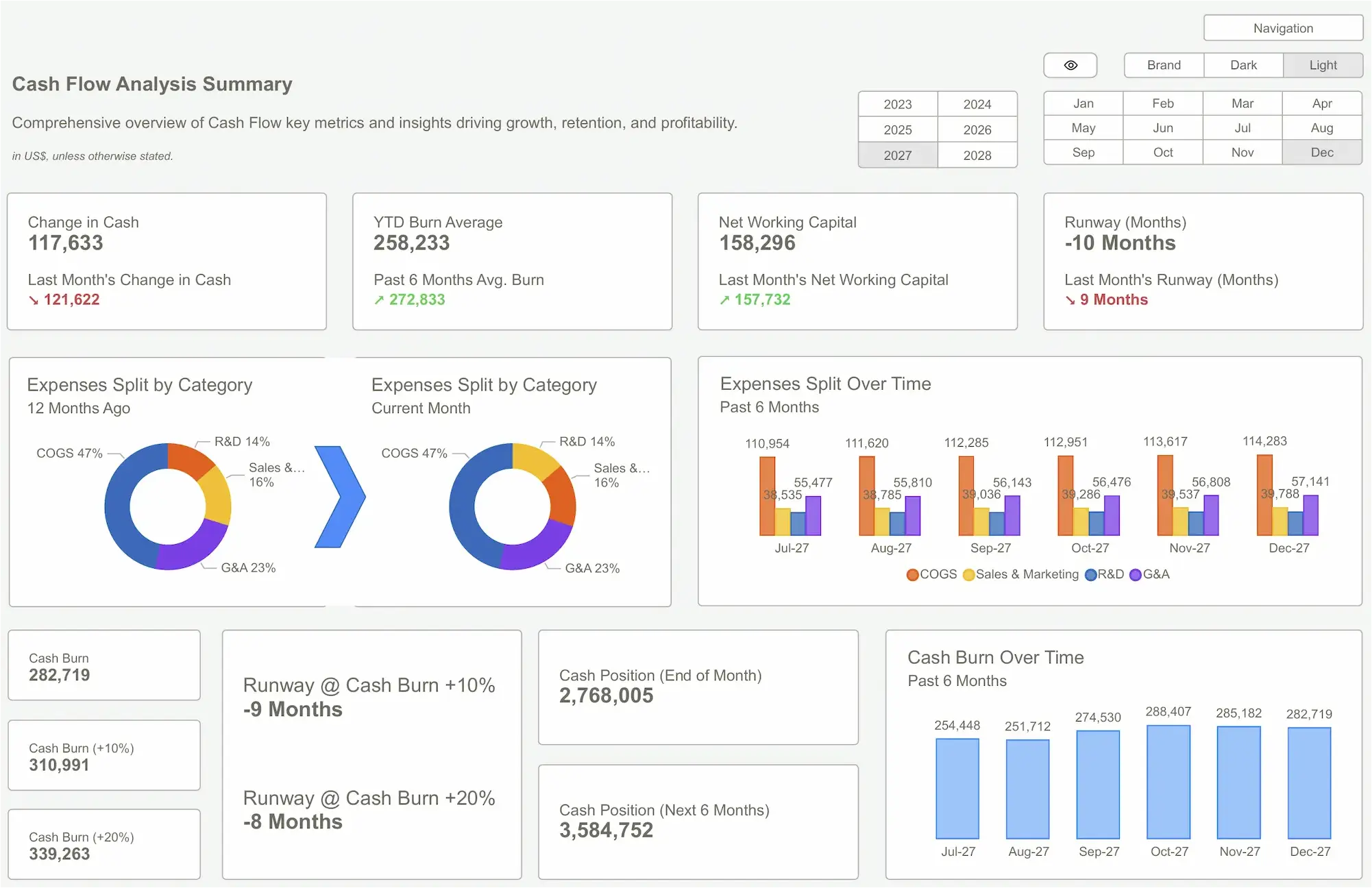Your monthly active users are up 20%. Your top-of-funnel leads have doubled. Your dashboard is a sea of green. So why is your bank balance shrinking?
This is the KPI illusion—the dangerous belief that tracking activity is the same as tracking business health. Most startups are addicted to vanity metrics because they are easy to measure and feel good to report. They create a powerful narrative of growth that keeps investors happy and teams motivated, but it's often a story hiding a fatal flaw. The consequence isn't just confusion; it's terminal cash burn, strategic pivots based on bad data, and a frantic search for the "leak" when the ship is already halfway underwater.
The problem isn't your dashboard. The problem is what your dashboard isn't showing you. It’s the gap between a good-looking number and its actual impact on your bottom line. This is where a forensic mindset becomes your most valuable asset. It’s not about finding fraud; it’s about finding the truth hidden in plain sight.
The Anatomy of a Lie: Why Your Dashboard Fails You
The illusion begins with a simple, flawed mindset: chasing growth at all costs. Founders are wired to focus on top-line metrics—sign-ups, traffic, downloads—because they signal momentum. But momentum without profitability is just a faster way to drive off a cliff. The perceived problem becomes, “We need a better dashboard,” when the actual problem is, “Our metrics are disconnected from cash and reality.”
Does any of this sound familiar?
- You celebrate revenue growth, but your cash flow is consistently tight or negative. Your P&L looks healthy, but the bank account tells a different story.
- Your teams are hitting their targets, but the company still feels like it’s struggling. The marketing team celebrates lead volume while the finance team stresses about the cost of acquiring them.
- Leadership meetings are spent debating what the numbers really mean. There’s no single source of truth, and every department has a different interpretation of success.
- You can’t confidently answer the question: “What is the true, fully-loaded cost to acquire and serve a profitable customer?”
This isn't a failure of tools; it's a failure of inquiry. Standard reporting shows you what happened. It rarely tells you why it happened or, more importantly, what it cost. One client we worked with was celebrating a 300% growth in users for a new product feature, justifying a major hiring spree. A forensic look revealed that 90% of those users were on a free plan that cost the company $4 per month in server resources, with a near-zero conversion rate. They were spending millions to acquire non-paying, high-cost users—a death spiral disguised as a success story.
 Forensic Accounting
Forensic AccountingFrom Speedometer to GPS: Adopting a Forensic Mindset
To fix the problem, you need to change the way you think. Your current dashboard is like a car’s speedometer. It tells you how fast you’re going, which is useful, but it tells you nothing about the engine temperature, your fuel level, or whether the road ahead leads to a cliff. A forensic mindset gives you the full diagnostic system.
The core of Forensic Accounting isn't just about reviewing past transactions; it's a forward-looking discipline for seeking financial truth. It operates on a simple philosophy: connect every significant operational metric to its direct financial outcome.
This means challenging flawed assumptions that have become business gospel. The most common? “All revenue is good revenue.” This is patently false. Revenue that costs you more than it's worth, revenue that comes with unsustainable support costs, or revenue from customers who churn after 60 days isn’t just bad—it’s toxic. It actively destroys value.
The smarter assumption is: Only profitable, cash-positive customer relationships matter for long-term survival.
This shift creates an “aha moment” across the organization. The marketing team stops chasing cheap, low-quality leads and starts focusing on channels that deliver customers with a high lifetime value. The product team stops building features for noisy free users and prioritizes the needs of the profitable 20%. The CEO stops reporting vanity metrics to the board and starts reporting on cohort profitability and CAC payback periods. The entire business reorients around a single, unifying goal: efficient, profitable growth.
 Data Analytics Consulting: Why Your KPIs Are Lying
Data Analytics Consulting: Why Your KPIs Are LyingPutting It to Work: The Forensic Accounting Litmus Test
This isn’t just theory. You can apply this thinking today. Let’s run a common vanity KPI, Monthly Active Users (MAU), through a forensic litmus test.
Step 1: Deconstruct the Vanity KPI.
You have 10,000 MAUs. Great. Now, ask the forensic questions:
- Cost: What is our fully-loaded Customer Acquisition Cost (CAC) for different user segments?
- Contribution: What is the Gross Margin per user? Are they on a free plan or a paid one?
- Cash: What is the CAC Payback Period? How long until a new user becomes cash-flow positive?
- Behavior: What is the churn rate for high-value vs. low-value users?
Step 2: Rebuild a Better Metric.
By answering these questions, you move from a hollow metric to an insightful one. You might create a new, primary KPI called "Margin-Positive Active Users" or track your "CAC Payback Period by Acquisition Channel."
The Before vs. After Transformation:
- Before: "We grew MAU by 15% this month! Let’s increase the marketing budget." This is a decision based on a guess. It’s hope as a strategy.
- After: "Our enterprise cohort from Q1 has a 4-month CAC payback, while our freemium-to-paid cohort has an 18-month payback. We are reallocating 70% of the marketing budget to enterprise acquisition and sunsetting two underperforming channels." This is a decision based on evidence. It’s strategy rooted in financial reality.
This forensic rigor is the foundation of every other strategic function. Your Financial Planning & Analysis (FP&A) becomes accurate because it’s based on real unit economics, not fantasy hockey-stick projections. Your AI integrations become powerful because you’re feeding them clean, meaningful data about what actually drives profit, not noisy data about superficial activity.
 Data | EY – Forensic Data AnalyticsFP&A
Data | EY – Forensic Data AnalyticsFP&AMost founders don’t need more data or more complex dashboards. They need the truth. They need to stop measuring activity and start measuring profitability. The KPI illusion is comfortable, but it’s the fast track to running out of cash while admiring a chart that goes up and to the right.
The practical power of Forensic Accounting, when applied proactively, is to instill a culture of financial discipline. It’s about building a direct line of sight from every operational decision to its impact on the bank account. This gives you strategic clarity to know where to invest, operational visibility to know what to cut, and the confidence to make faster, better decisions.
You can't afford to be surprised by your own business. Chasing vanity metrics is like driving a car with a taped-over fuel gauge—eventually, you'll run out of gas. The only question is how far from safety you'll be when it happens.
Don’t wait for the fire. Know where the smoke is coming from.
Still unsure? Send us your dashboard, and we’ll tell you what it’s not saying. We help founders find the signal in the noise.Get Started >
Ready to Unlock The Full Power of Clarity?
Explore our engagement options and pick the plan that fits your workflow.




